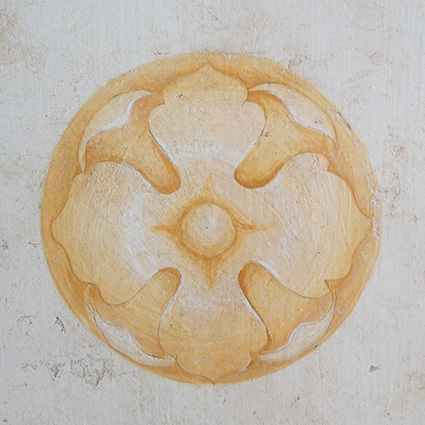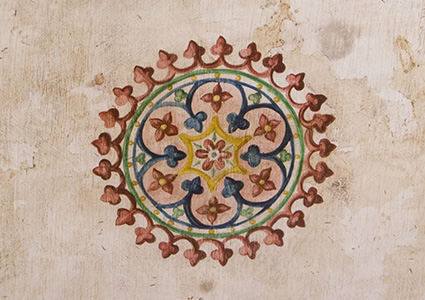As with the Italian decorative artists of the XIVth century, Marie is inspired by the creative enthusiasm of the Renaissance period. This important movement which originated in Europe was a social upheaval affecting at the same time the arts, philosophy, sciences, modes of thought and the organization of society. In Italy, it begins in the early fifteenth century. The revival of classicism in the Italian arts took place mainly between the years 1400 and 1650.
Decorative art in Italy at the dawn of the Renaissance is inspired by the Gothic style. This style incorporates geometric patterns and representations of natural shapes, such as plants, shells, animals or faces, which are used as decorative elements to decorate manuscripts, furniture and interiors. The Gothic style, imported from the Nordic countries in the Middle Ages, was considered non-Italian by many artists and was soon replaced by a new style of decoration with the advent of the Renaissance.
From the artistic point of view, the Renaissance is mainly composed of a revival of the classical Roman and Greek style. It was then recognized that these civilizations had attained excellence worthy of respect. Painters, sculptors and architects collected ancient fragments and studied works recovered from the classical eras. The artists incorporated Greco-Roman forms such as columns, balusters, foliage, putti, festoons, rosettes, mascarons and candelabra in their decorative schemes.
Renaissance artists have inevitably added innovations to these decorative elements. The Grotesque ornaments became very widely used. This grotesque style was born at the end of the fifteenth (or XVth) century during excavations of Roman ruins which revealed villas in which the wall decorations were preserved. The villa of Nero, the Domus Aurea, built in the first century and excavated in the 1480, was a great source of inspiration for decorative artists. The ancient walls were completely covered with a type of fanciful decoration called "Grottesche". This name comes from the word cave or cavern, reffering to the underground chambers where these decorations were discovered. The Renaissance artists adopted these decorative elements with enthusiasm. Also, they were inspired by Moorish decorative elements from Spain and the Arab countries.
Through the ages, art is a reinterpretation, a schematic renaissance of the styles and influences of the past. Adapting this knowledge inherited from the past to modern uses allows Marie Guérette to incorporate these traditional decorative elements into her present creations.
Ancient knowledge
Traditional natural materials
New art


